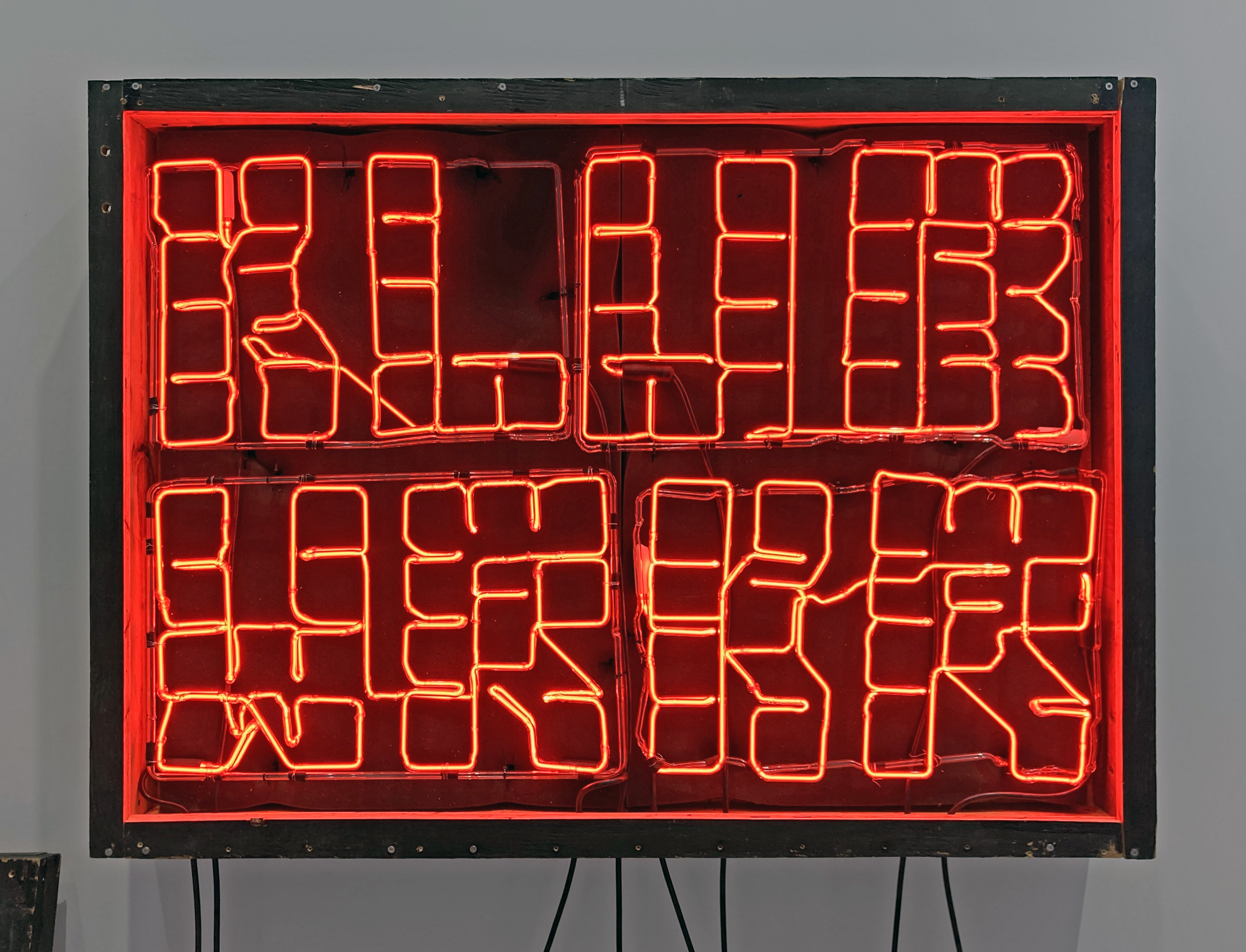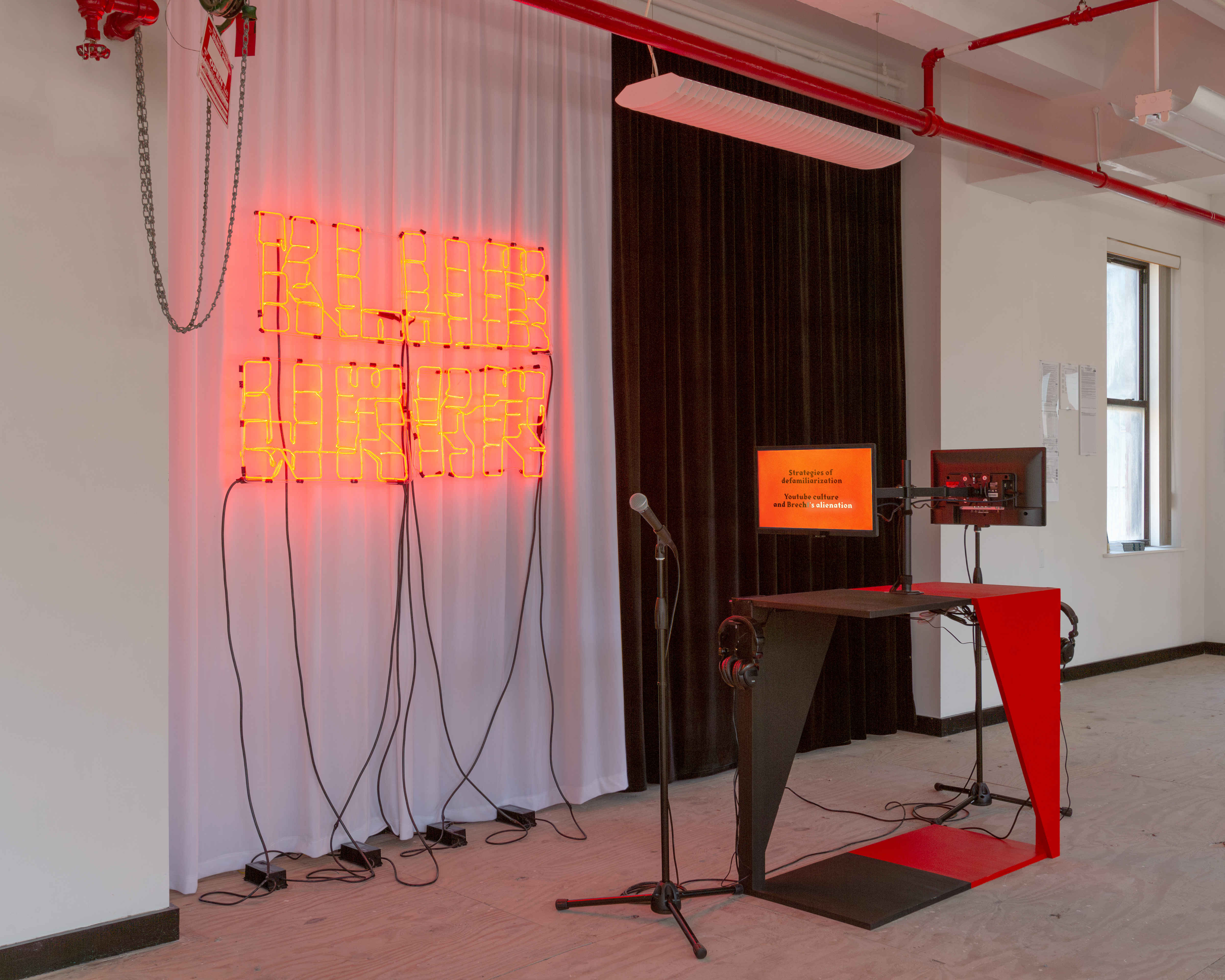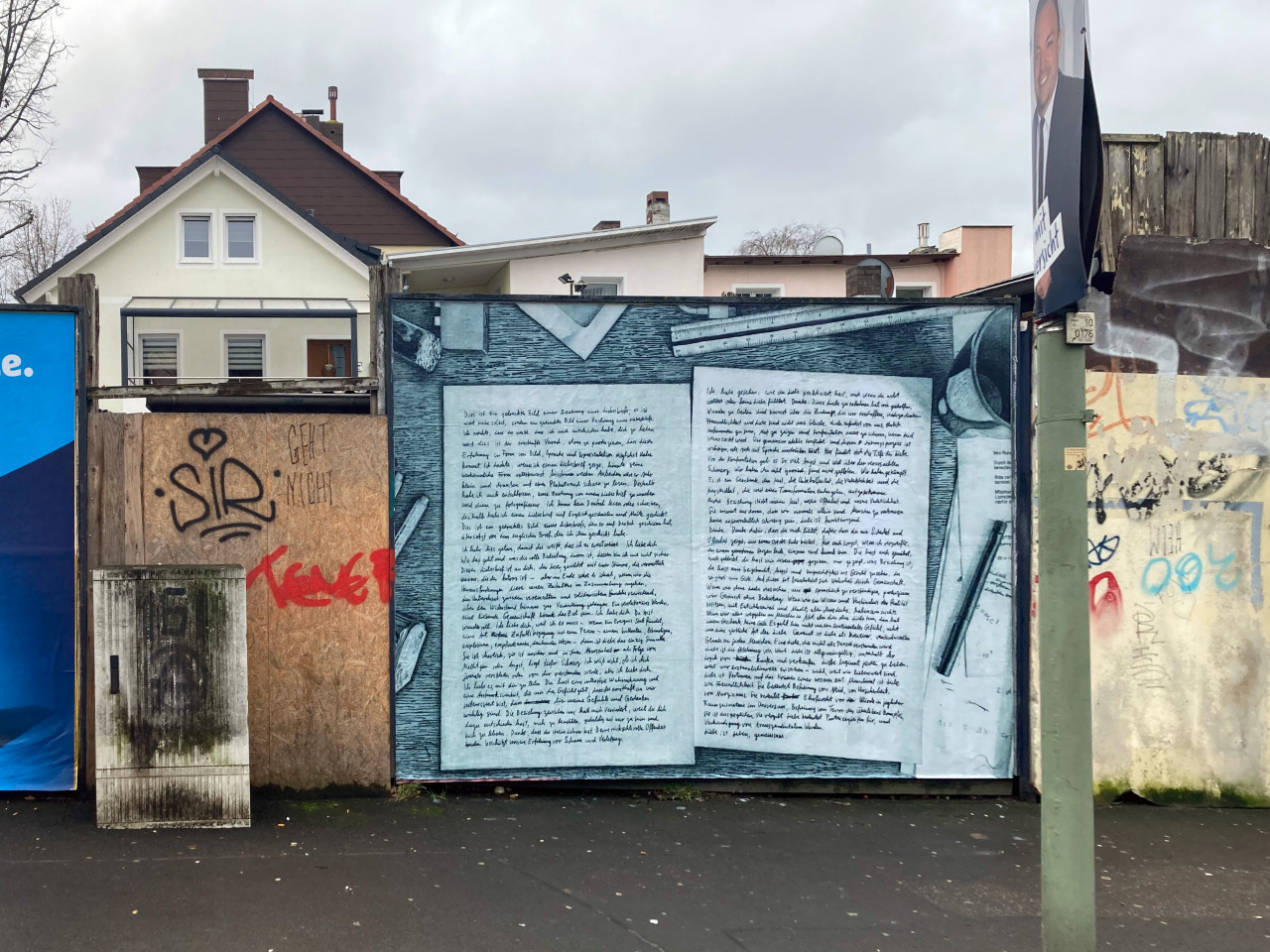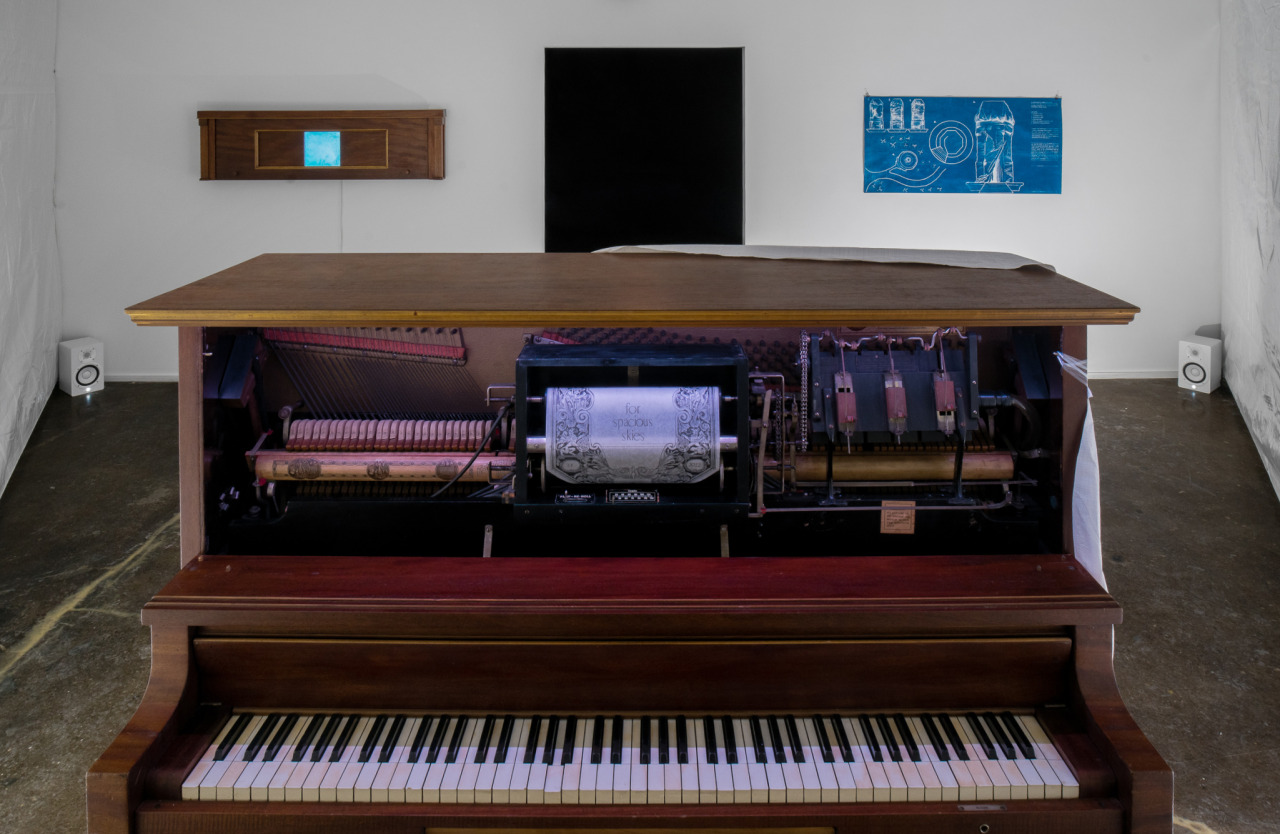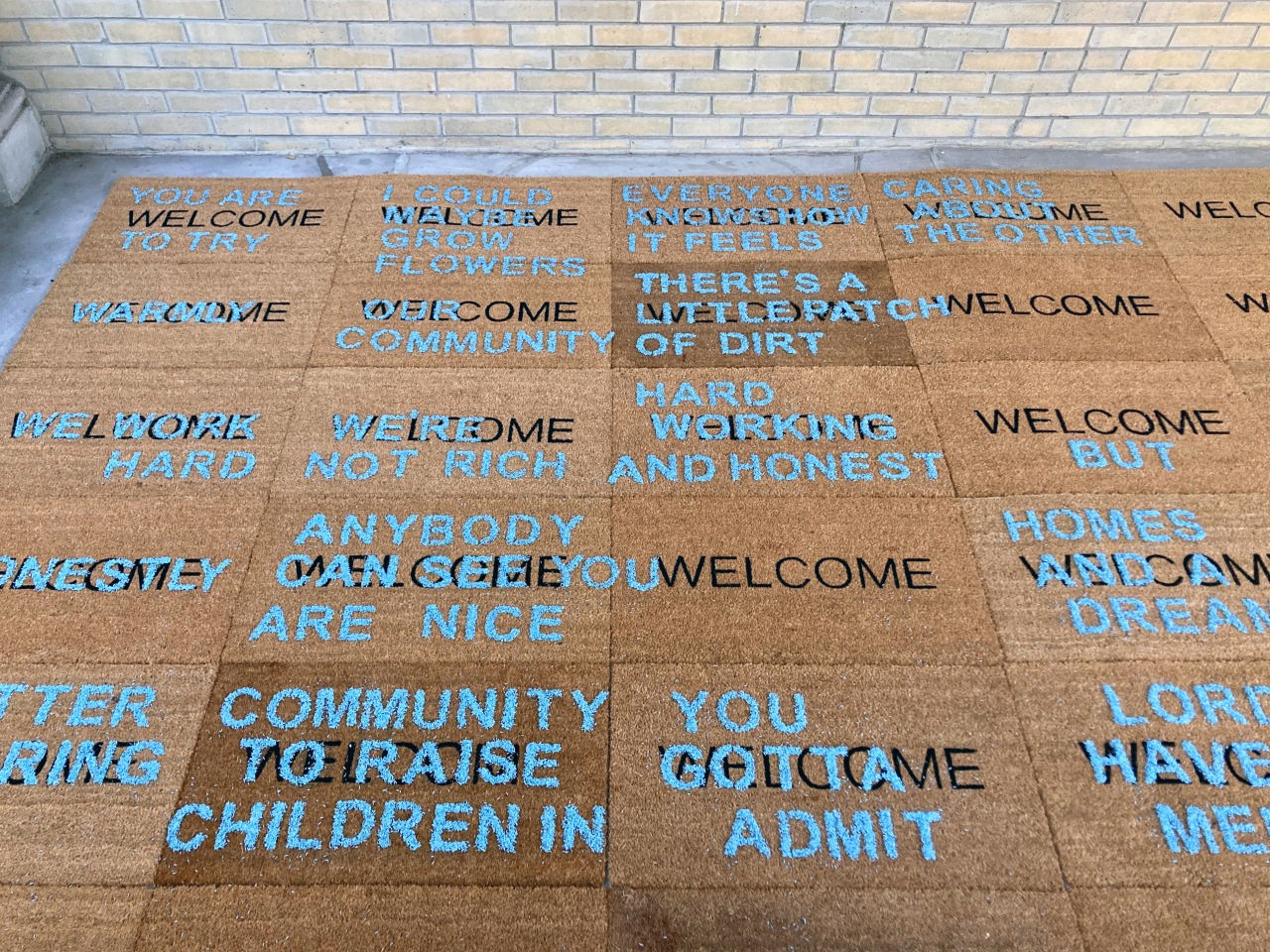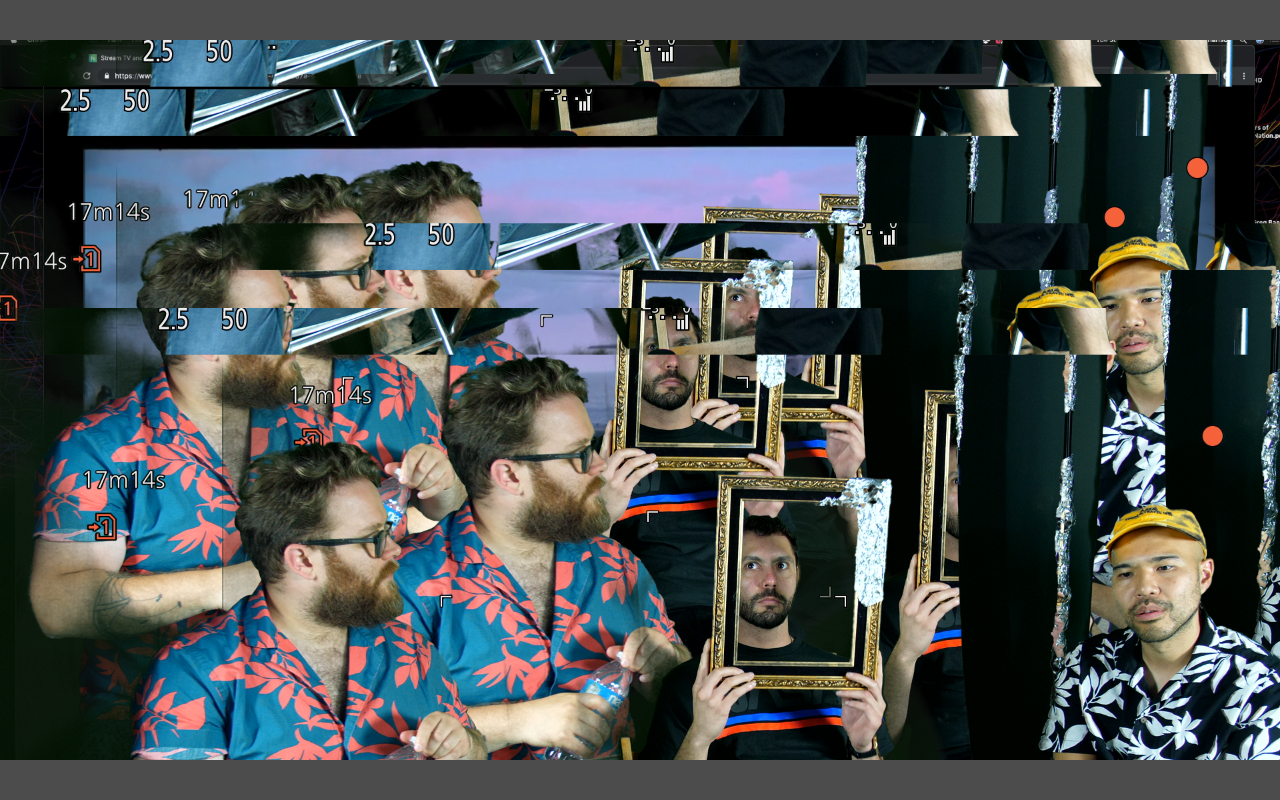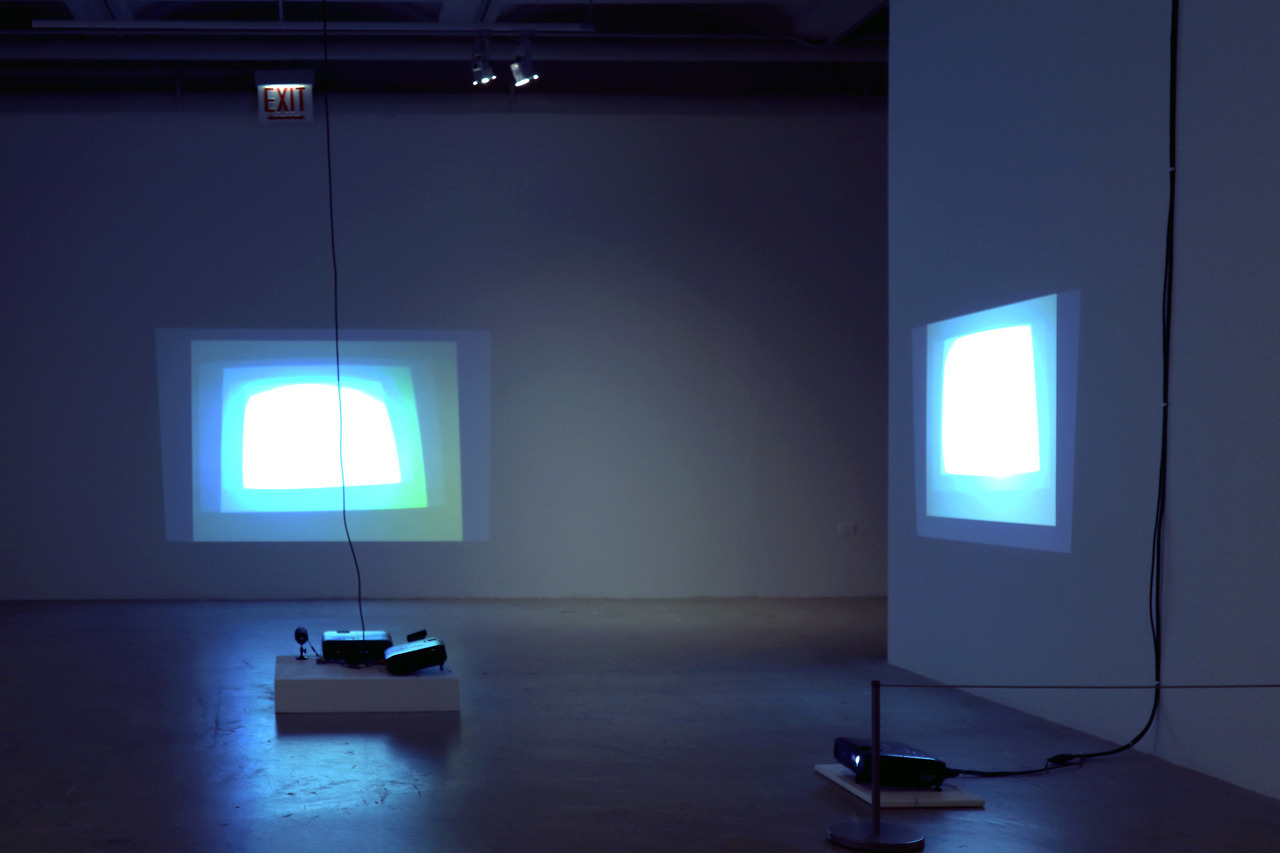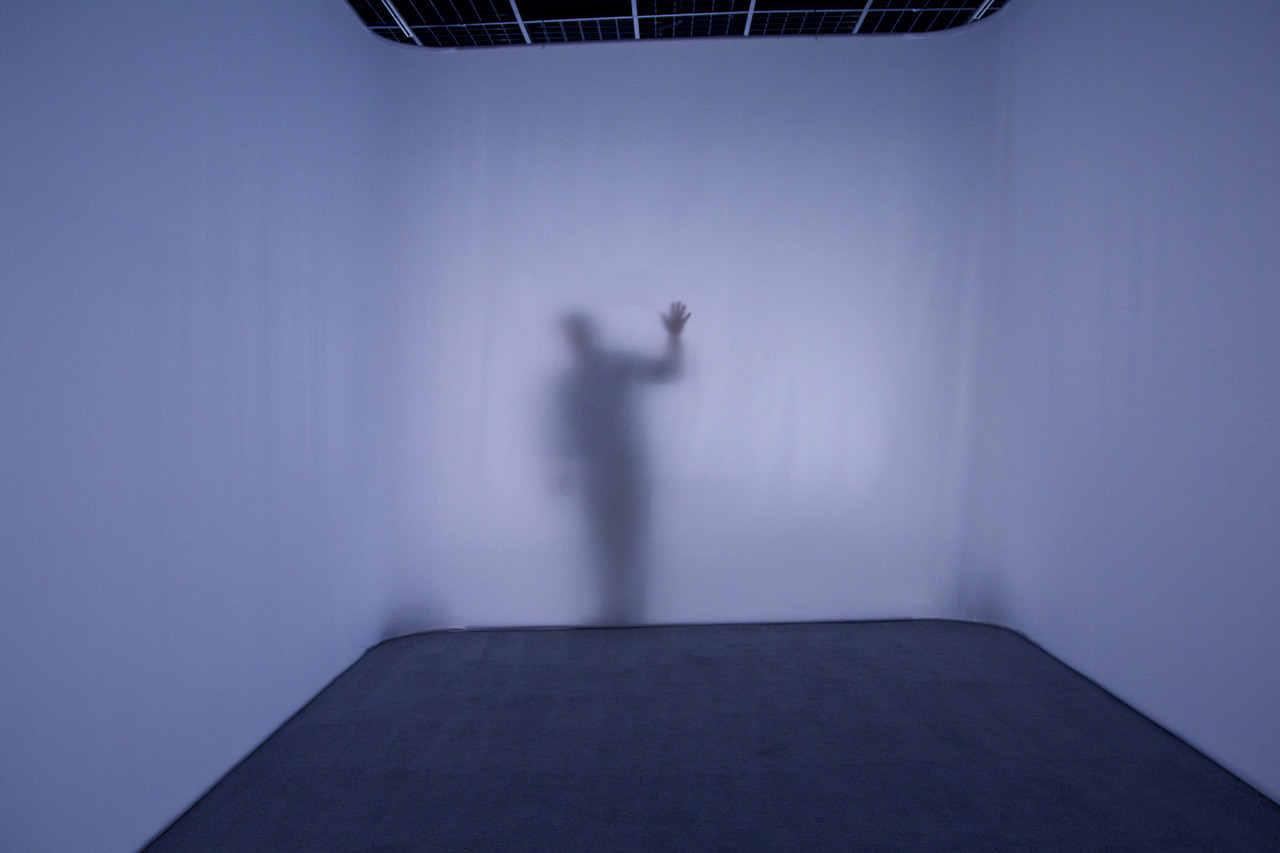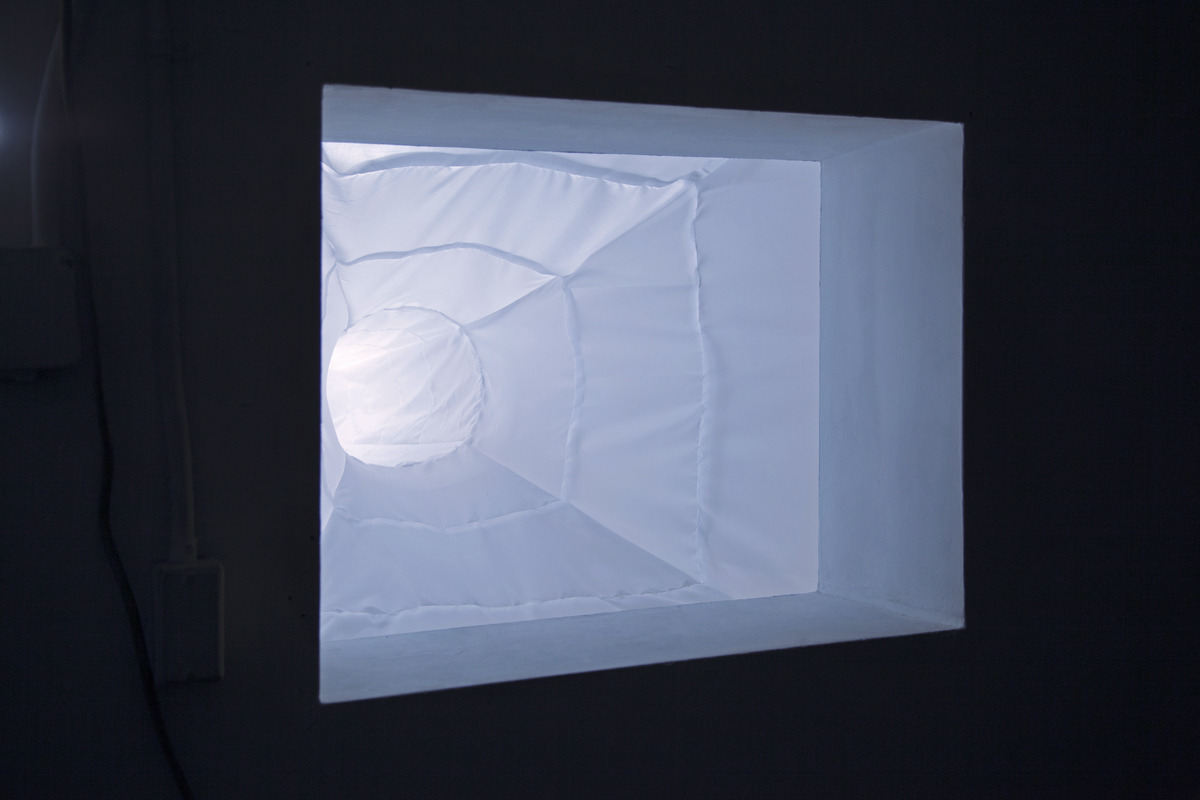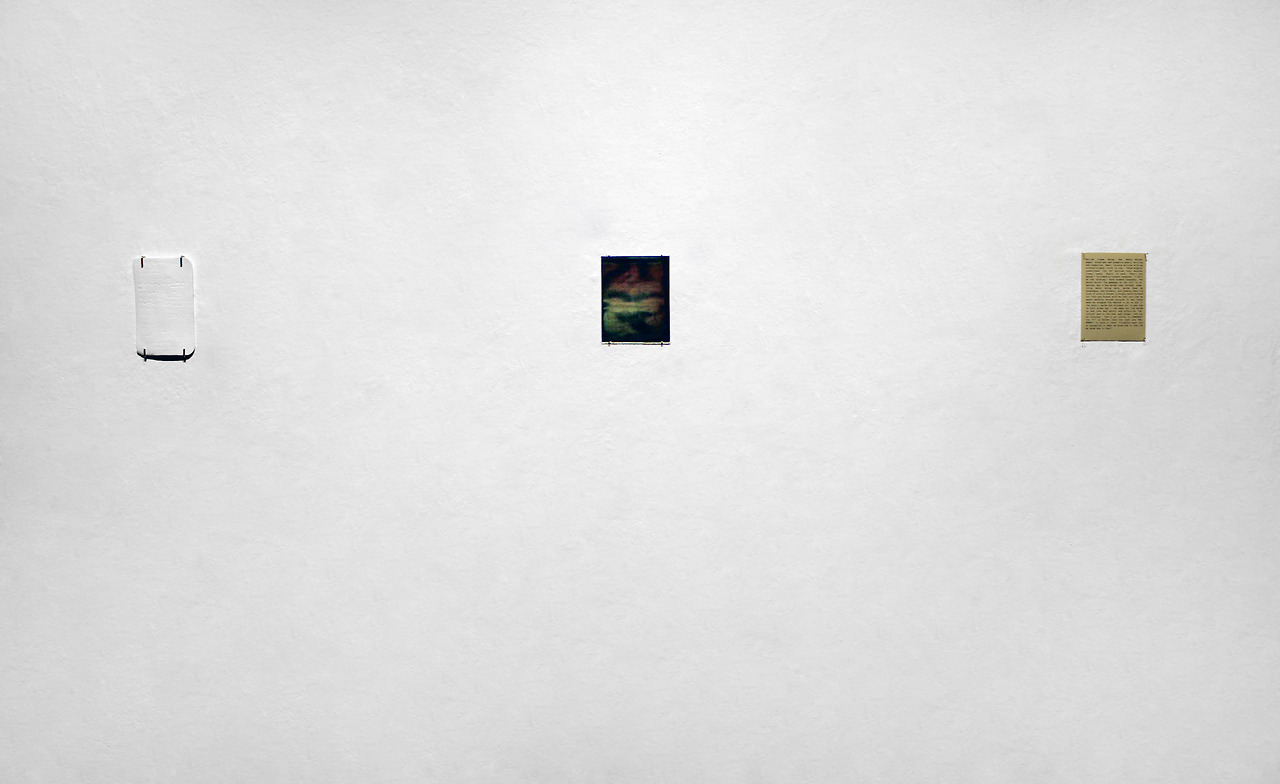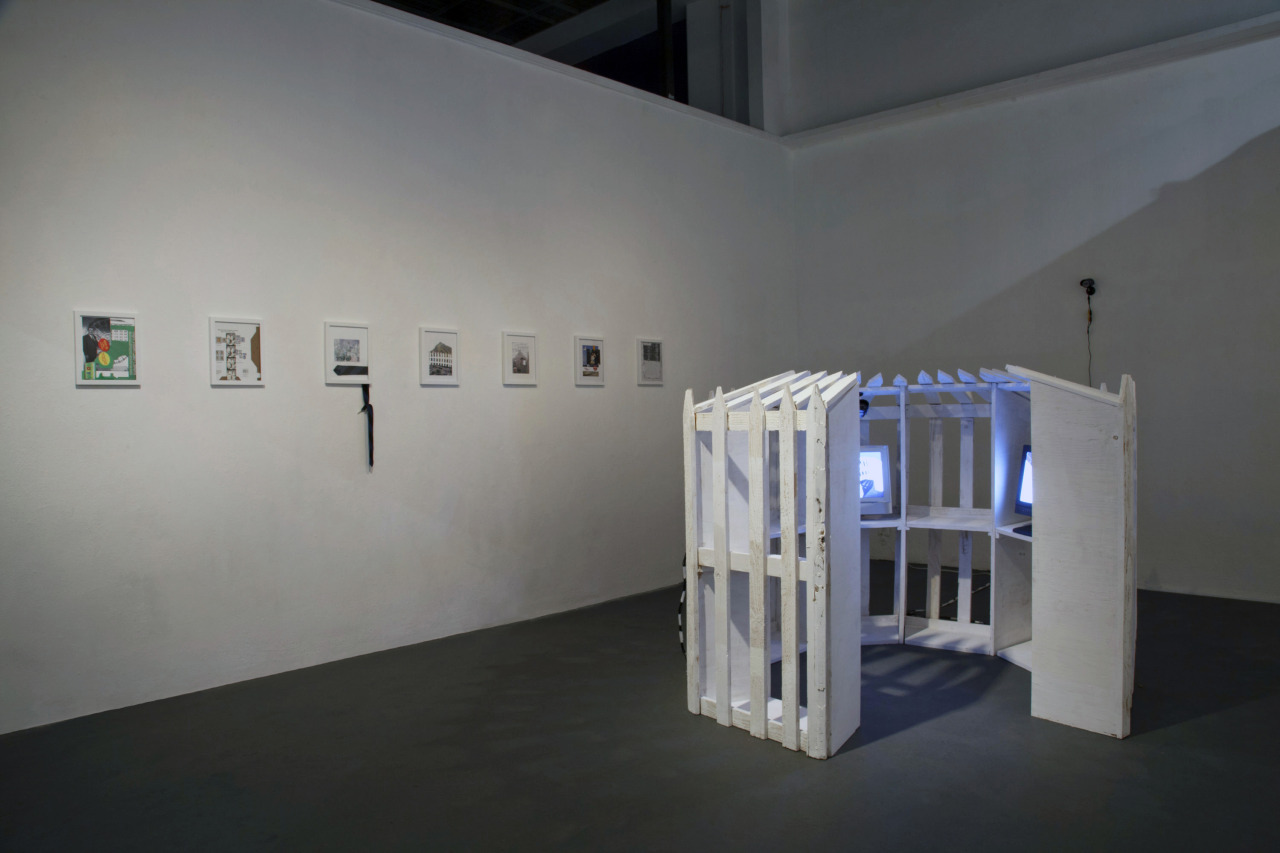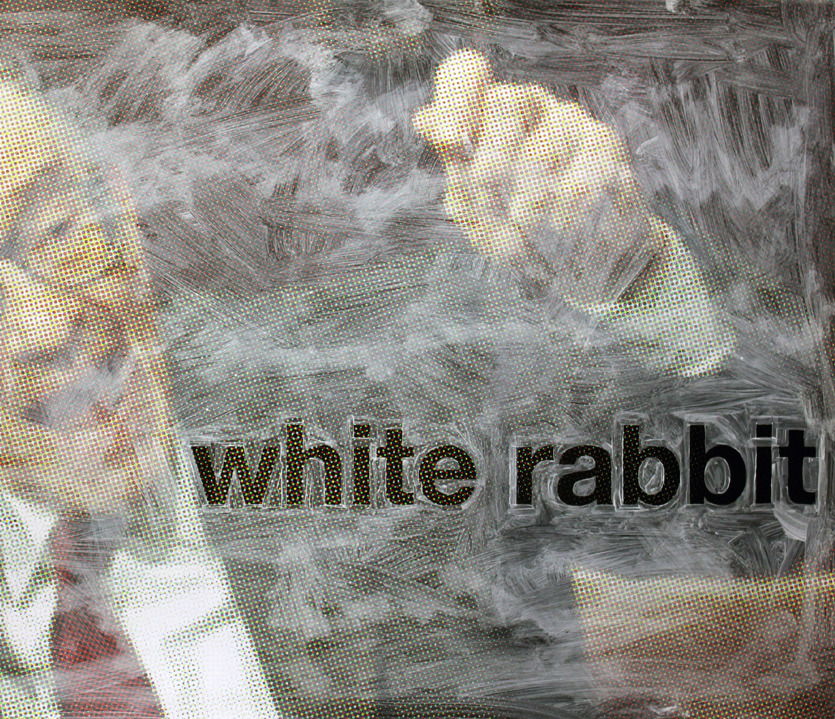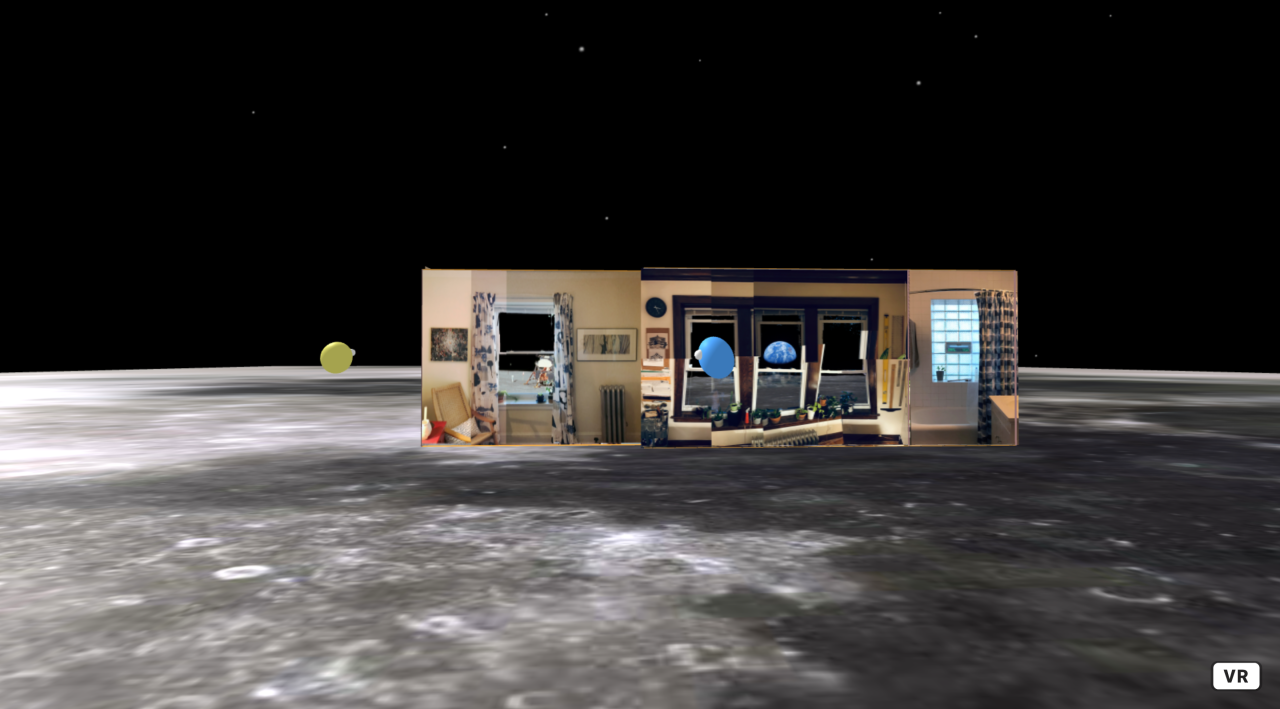
chance encounters for a third try:
attempting a house party on the moon
06/20/2020 — Attempt No. 01: value and people
07/04/2020 — Attempt No. 02: timespacematters
07/18/2020 — Attempt No. 03: systems of cultural production
this work was commissioned for the exhibition:
Another Idea, an actual conceptual art exhibition
Organized by Zachary Cahill and Michael Schuh
The Gray Center for Arts and Inquiry
University of Chicago, Chicago IL
chance encounters for a third try: attempting a house party on the moon is a performance architecture in which my flat in Chicago was reconstructed on the surface of the moon – Earth’s natural satellite. I imagine, with the cosmic radiation and ultraviolet light, there isn’t any Covid-19 on the moon so it’s probably a good place for a house party. I originally went to the moon back in July of 2019, to see if it was a site for revolutionary becoming, and if it could offer possibilities outside of subjugation and capitalism that feel impossible on earth. This may be a good time to revisit those questions. What does it mean to “be together?” What do we do when we can’t do what we do?
This architecture was activated three times over the course of June and July 2020, in order to attempt a house party on the moon, the first-second-third of its kind (but that doesn’t really matter).
Each attempt hosted various activities to uncover the necessary and sufficient conditions of a house party. This site-responsive work/party dwelled on the various roles that isolation, distance, and technology play regarding daily social life and domestic experience for people on Earth. Have we found ourselves in a time and space when matters of existence have never been more precarious and policed, isolated and interconnected, informative and confusing? We’ve witnessed black death, gone live, worn our masks, hidden inside our apartments, assembled in our streets, filed for unemployment, zoomed out, baked bread, sanitized, and got thoroughly screened, but there is still no vaccine.
So we came, had a drink, listened to the DJ’s music, danced, were wallflowers, smoked on the porch, caught another’s eyes, and had a chance encounter. We lingered in the kitchen, if you felt antisocial there were plenty of books and places to snoop around. Oh, and Tim asked if he could use the bathroom. We talked about what we care most about, we imagined the future, and contended with what we never really left behind. Maybe we found new comrades, maybe we found work, maybe we found life together, in many ways we surely failed.
After all, we were all beside ourselves.
The house architecture used for the attempted house parties can be accessed through the following link: partyonthemoon.house
This work would not have been possible without the participation, collaboration, contribution, and support of these lunar and terra comrades:
Tim Tsang, Vlad Avesalon, Tyler Ann Liegmann, Samuel Zalanga, Adam Feldmeth, Charles Gaines, Nyeema Morgan, txgen meyer, Andre Keichian, Carmen Amengual, Mary Coyne, Gabriela Barreto Lemos, Gregory Bae, Joestine Con-ui, Lily Kind, Liang Luscombe, Paul Rosero Contreras, Sherwin Ovid, Anna Pangalou, Sebastian, Tamara Becerra Valdez, Smokee Goddinson, Annika Haas, Matthew Lax, Will Lee, Zachary Cahil, and Mike Schuh
The work was documented through the following screenshots and written reflections made by people who attended the attempted house parties:

I felt unease about going to a party, the last I saw friends packed in an apartment was the weekend before quarantine started. It’s unfortunate, but I always need a little social lubricant to relax at parties. the party on the moon seemed so much more real somehow. I hesitated to join zoom whenever prompted :) the stakes felt lower and more manageable this way, while I wanted to party I wasn’t ready for a coherent social interaction. Instead I chose to explore and try to communicate through the basic movements of my blob avatar. yes/no seemed a simple response, but there were no questions to decipher. only yes/no responses. a lot of missed connections or inferred probing. I tried to prompt someone to follow me by looking towards the direction i wanted to walk and then turning back to them and shaking up and down “yes” —yes come follow me. I walked to the edge of the moon, no one followed. I began to look at the stars, I walked off the edge of the moon and really began to float—everything moving, but your distant apartment stayed put. I thought I might fall, but the gravity seemed to not be an issue here. I began to walk back when someone snuck up to me. I tried to get as close as I could to really get a good look at them, but they kept backing up to stop and stare at me. we went on dancing this way for a few minutes. I set off walking towards earth. we walked towards it realizing that there was not much to see actually, we dissipated behind the flat earth. looking up I noticed a nebula or some sort if colorful arrangement of distant stars or really a jpg creating a partially convincing illusion. I left to get a drink and take a break from the moon. coming back 15 minutes later I realize my friend is still tagging along. walking in circles close by. I hope they thought I was lost in deep contemplation, star gazing. — Julian

one thing i experienced DJin'g was disney hits hour with families around 10:30 pm and the sweet delirium of being up past bed time. and also intergenertaional dancing. and also a mostly femme last night session the freest of the free and also not really wanting to talk to anyone. when im on the dance floor. as usual. and also feeling a bit like a gogo dancer at times. which i don’t hate. i know gogo dancers and exotic dancers who are broadcasting from home. i think it’s kind of brilliant in some ways.
not really being in the mood to ‘make new friends’ with words. just dance honey. wanting someone to bring me snacks tho, like always. loving durational-ness of dance parties, the flow-state, the trance state. gotta go at least 2 hours. i went three i think. — Lily

When I visited Kyle Johanson’s apartment a few years ago, I was awed by his hospitality and aesthetic sensibility. When he invited me to a “chance encounters for a third try: attempting a house party on the moon” and greeted everyone with an invitation to walk through walls because we were testing the bounds of timespacematter, I could barely contain my glee. I spent the party capturing my beloved glitches in a familiar-yet-unfamiliar space. I was most obsessed with the wood grain on the door that tiled out and mimicked the “digital grain” of the QR code and the impossible staircases, a la Piranesi on the moon. — Alice

It was really cool, aesthetically and conceptually. I loved the intro video and the 3D world, it was super well realized (polished) even if it’s glitchy or jumpy it feels part of the aesthetic. It also felt like a really good thing to do under the circumstances, like good balance between "art project" and “zoom party” (remember we used to talk about this with showinahouse?)
I think for me personally, the challenge was that I wasn’t necessarily ready or in the right space to attend a party. I haven’t been to a party or hung out with multiple people in several months except for like the other day Eyvind and Jessika came by. So I felt unprepared socially and psychologically. And (I think this is true for many people), I normally have to get into the right mindset to ever go to a party in the first place and feel like I can participate. So in terms of feedback for you, I guess a point there is that obviously zoom parties interrupt whatever kind of day a person might be having at home, so that the “mindset” or rules, social expectations etc of a party are a little more artificial than they usually are because you’re not actually in that space//context. You’re also skipping the whole part about getting ready and making your way to the party, which is a big part of the experience of a party. It also is already a little awkward in the first place to attend any party where you only know one or two people, and the fact that it’s a zoom party makes that worse because it takes away shared space and spontaneity. Having said that I think all these things can be overcome with the right attitude and communication, and it helps that you did this three times so people had a chance to be more familiar with the format and with each other.
I definitely saw it as art, but I think it was very well articulated because the art apparatus was instrumentalized to foster a community space. (Maybe the converse for example is if you host a zoom party for a performance - in this case the community space is being instrumentalized for access to the art.)
I wouldn’t have attended if Kyle was just hosting a zoom party. I went to check out what the two of you were up to, because it seemed interesting, because I follow your work, and because I’m your friend. Also just “to see.”
I’m definitely interested in keeping up//seeing how this practice develops. I’d love to see what other kinds of events or activities could happen on the moon, other than just house parties! Moon archaeology? Stargazing? Would also love to see more aliens and neighbors from our solar system get invited. — Parches

I honestly had a difficult time coming up with expectations for how this party might function but watching these virtual gatherings unravel and reform over time was extremely refreshing. I think the hardest part of moving into virtual space is just how predictable everything has become. Computer logic is powerful and seemingly flawless, but a computer brain will never be able to replicate the chaos that must ensue for a party to be really great.
I came to these parties excited for the type of discussions you often facilitate and was not at all disappointed. What I think was even more exciting was the chance encounters I never thought possible in virtual space (at least not on the extremely homogenous internet of 2020).
Long Live the Kitchen Crew!!!!!! — Tyler

Dear Kyle,
Thank you for flying us to the moon. What stands out in my mind that larger groups of people were able to speak intimately and seriously together with patience. I used to think once 5 people were together conversations immediately became lighter with only two people really dominating the conversation and everyone else watching. So I was very surprised to experience a large group conversation holding critical dialogues. Large groups can dance and eat dinner but I didn’t know they can listen to each other.
Very best,
SN
SN

Dancing on the moon, I turned my background to the outer space backdrop as I thought this was the most appropriate place to be. A minute later, so had one of my fellow dancers as if we were in the same outer space. I left the back drop on after the first party and in zoom meetings or friend catchups people would comment how they wish they were also floating off with me, I would joke that I needed a break from that place.
There was something so fabulous to me about the image of Kyle’s shoes creeping up onto the wall outside his apartment. I loved visiting Kyle’s apartment when it was on Earth, I would pop by his veggie garden on my way up. Now I look out the window to the moon’s craters and wonder if I should ask more friends to also move up here. He loved introducing people to one another at his parties, now he reaches and strains with Zoom to make the party feel like a place where I might not know how to interact with its interface. The interface of the dreaded work meeting. All his things are there in the apartment, flattened and wallpapered, I glimpse his feet, caught in the facsimile. Are we done with Earth or is this a vacation? I see the Earth off into the distance, it seems very small. Why had this Earth become so inhabitable I wondered as we reflected on how many of us were without jobs. I often wish the things I did on Earth were not seen as surplus. Kyle said we are surplus and I quietly nod my head. I went and danced some more, I love watching people on Zoom disappear into their backdrops. Someone is a little too drunk and cries about police brutality. I find no words for my anger but instead I watch Will take photographs of ferns in a dystopic video game that has a wonderful color palette that beams us to the remains of Earth. — Liang Luscombe

Kyle Johanson’s Moon Party was an interesting experiment in throwing an online party in the time of corona. I was briefly an attendee on the second part of the three-part party, and then a participant on the last day. I mainly played games in the bedroom, which is my natural preference at any party. In this room, I could not hear anybody while others could hear me. If they wanted to communicate, they would have to message me in the chat. Also, my preferred means of communication at a party.
I first played Assassin's Creed: Syndicate in an attempt to locate Karl Marx in Victorian England's Whitechapel district, then Umurangi Generations. (Umurangi means red sky in Te Reo). The former was an exploration/simulation of Jamie Woodcock's analysis of the cruel irony of playing a game which features the heroes helping Marx organize a strike and liberate a factory from an exploitative boss. Meanwhile, rampant workers exploitation, sexual harassment, and oppression rules the game industry, especially at Ubisoft who develops and publishes the Assassin's Creed series (see Woodcock's Marx at the Arcade). I couldn't find Marx in time before my laptop overheated from streaming and playing at the same time. The revolution was deferred once again by inadequate material conditions. The latter game has players assuming the role of a photographer at the end of the world, observing and documenting the last generation on earth prior to a devastating kaiju attack a la Neon Genesis Evangelion. Influenced by the 2020 Australian wildfires and corona epidemic, designer Veselekov has us inhabit the shitscape of a forgone crisis-state Tauranga, only being able to record the consequences of an inept government, and spending time trying to make chump change off of photos from some unknown employer. The sweetest respite is that your friends are with you in each level, just mulling about. The melancholy is accentuated by the sad 2000s-influenced synth bops of ThorHighHeels, aka Adolf Nomura, and the cel-shaded polygonal ruins reminiscent of Jet Set Radio Future.
Anyway, back to the party. I spent most of my first time at the party exploring the space Kyle and his designer had built. A charmingly slapdash recreation of his apartment comprising crudely mapped photographic meshes of the place onto a simple corridor structure. The whole navigation was a mix between old first-person-shooters like Doom or Wolfenstein, and the hyperlink wanderings of Twine games, with rooms containing “hotspots” linking to other livestream services, like Twitch, Mixer, Zoom, and pre-recorded videos on YouTube among other miscellaneous parafictional annotative gestures. Other participants occupied other rooms throughout the house, holding discussions, leading dance parties, and straight chillin. These discussions went on as most other online courses, meetings, or even chats do: slightly awkward, somewhat informative. Of course, this is no fault of the speakers or anybody involved, but inherent in the medium of the video call. It demands constant eye-contact and stillness to remain in the frame of the camera, wholly unnatural and distinct from the normal physical automations of in-person conversations. Video chats demand and abhor idleness. There is an argument to be made that the experience of virtual meetings is like reducing all social interactions into the silliness of symposium decorum. It’s just one long and terrible Q&A. In any case, the party was a successful experimentation of virtual being, but left much to be desired in terms of virtual belonging. It isn’t possible to achieve a kind of intimacy or du-und-ich-keit online, but there is something alarming when we’re forced to be on camera. OnlyFans has the right idea in charging people to see the person being recorded. If I had one recommendation, it would be to have used Mozilla Hubs, which includes a plethora of pre- and user-made avatars to be used (what’s with first-person being so popular in these VR chats?). Moving in such spaces sublimates the stillness irl into the movement of the virtual avatar. This is how gamers can be sedentary for so long. The events were also structured in a way where people would come in and out over a period of 4 hours or so, which means strangers appearing and disappearing with really no introduction or interaction with one another. Hence, why I opted for a more detached set-up in the bedroom. Aside from seeing one another’s face, I don’t know what is afforded that couldn’t be more streamlined with a text interface or avatars (see VR chats). I think our pandemic precautions should be extended to online: fuck the face, wear a mask.
Another considerable aspect was the lack of party games as both the game genre and the implicit social interactions that come with being inebriated or neurochemically altered. The lack of the latter is unavoidable, but the former seems like it could’ve had more of a presence so that there was some structure to the types of interactions. It is precisely the assumption that irl interaction could be transposed into digital interactions seamlessly that makes the whole virtual/video communication a sordid affair.
Verdict: Would party again, but only if video is turned off. — Will

'chance encounters for a third try: attempting a house party on the moon' couldn’t have happened at a more impactful moment— during the isolation of a global pandemic. Naturally, I had been missing out on the companionship of friends and family, but what I hadn't expected was the missed interactions with strangers— the everyday social collaboration. The aggregate of 'inconsequential’ conversations and negotiations that actually bear profound significance. The house party on the moon was a pleasant reminder that we need each other to experience and share our joy, our fear and to commune as a way to reflect and affirm our humanity. Although there was distance, as there is when occupying virtual space, it wasn’t felt because of the intimacy and familiarity of Kyle’s home. I was also amused by the fact that even in the virtual space and on the moon, the awkwardness of social performance during house parties was still, occasionally, present. — Nyeema Morgan

Being invited to a party on the moon felt safe considering the lack of oxygen and atmosphere - respiratory disease tends not to thrive where there isn’t any medium to travel. I missed the first two opportunities to leave the safety of the ground, but I caught the last flight to the party, a bumpy ride at first but once I landed on the cold rocky surface I found something unexpected. The moon’s surface is antisocial - it’s removed, cold, breathless, it’s a celestial wallflower - looking in from the outside always. I suppose we’ve all become moons over the last few months. In a room full of new people, new faces, the social needed to be reconstructed and I quickly realized I had forgotten the more terrestrial ways of interacting, of partying, we had to make some kind of lunar intimacy. Each small screen like a face shield in a space suit, as close as we could be and wanted to be. Something new was made as there was and remains a shared understanding that since gravity had stopped working the way we knew (everything had stopped working the way we knew) we could talk however we wanted, say what we wanted, cut to the core of loneliness, the strangeness of meeting knew people, and the abject silliness of it all. A House Party on the Moon is a good way of putting it, but in the most provisional sense of the word party, but was a helluva good time none the less. — Gareth Kaye, Apparatus Projects


Dancing in Kyle’s living room, 2,017.9 miles away
There is something about anything which purports interactivity makes people like me instinctively decline to participate. Either out of suspicion or downright obstinance, my first Moon Party was purely observational. I listened. I took notes on post-its. I drank vodka in silence. A few months into lockdown, at the onset of the protests around George Floyd, I was demoralized and depressed. I was irritated by art. I was further irritated by the conversation around art, both at this party and elsewhere, particularly limited fixations on and around efficacy, more technical than formal, a question of artwork and audience, product and consumer.
At this point in lockdown, screen-fatigue was setting in. We could not see where we were going and the screens to which we clung were neither an escape nor an outlet. A co-worker of mine had begun seeing tiny “floaters” in the periphery of her vision. I was experiencing strabismus regularly, and the blind incompetence exemplified at all levels of government, local and international was demoralizing. The claustrophobic realization that our social, romantic and professional lives would be confined to these 16:9 windows at varying resolutions for the foreseeable future made me privately wonder about the point of having a party, an attempted party, no less. One of my post-it notes read, “contribution, not critique.” I may have not wanted to admit it, but I was questioning the efficacy of art too.
In keeping with the marvels of space exploration, each Moon Party featured a technical innovation from the previous. The stars don’t look bigger, but they do look brighter. In the first party, Kyle Bellucci Johanson’s apartment was replicated in fully navigable 4-dimensional space. While the first “mission” included blob-like avatars where one could simultaneously track their movements on the website in tandem with their zoom conversation, by the third party there were no more walls and the party seemed to extend infinitely through a digital “space.” Each room, kitchen, patio (for smokers!), living room, bedroom, bathroom, etc. - correlated to another Zoom room where one could converse with whomever else was inside. At the first party, morose but still horny, I immediately went to investigate the bedroom. Whereas in all other rooms one could converse normally with other occupants, the bedroom had only a text feature accompanying the camera. The bedroom was the only muted location.
At the second Moon Party, I was determined not just to participate, but to steer the conversation away from the theoretical. I went to the corner store. I selected a six-pack of Corona - some feeble, liquid irony. I did not have my ID, they couldn’t see me behind my mask, I was sent home. I returned with proper identification. I grabbed the nearest six-pack, paid and returned to my computer. I cracked open a beer and was startled to realize I had not grabbed the Corona, but Coronita, the stunted 210 ml little sibling of the standard 330 ml standard, perhaps better suited for cocktails like the michelada or the beer-garita.
As silly as it sounds, at the second party I made friends. Michael, cool frog (alias) and Andre and I banded together, determined to crack the infrastructure of the Moon party. In moving about the different rooms, we learned of the preconceived logic of the Moon Party’s architecture as designed by Kyle, as well as the additional limitations imposed by Zoom. For instance, Kyle received a notification which allowed him to grant access to the bedroom and therefore know who was in all the rooms at once. In an effort to return to the spontaneity of a traditional house party, Michael, cool frog, Andre and I intervened, tricking Kyle into following us around from bedroom to kitchen thereby exposing the system by which once could control or surveil this space, or any other. We talked about race. We talked about privilege. We talked about the overwhelming systems of capital which keep us both at odds and in bed with one another. We talked about the shortsightedness of this project or any other.
And then we danced. We danced and for the first time, I was rid of the spectral comparison of every and all Zoom sessions (including three Passover seders) to the ubiquitous cam-girl I associate with this method of communication, the self conscious performance, the actor’s reflexive glance to the upper right corner where they can see themself, edit countenance and gesture. I will not wax on the opportunities technology has given us, for the democratic possibilities of technology remain as shortsighted and insular as much of the art world. However, as I danced in Kyle’s “living room” with people from Chicago, Brazil, and Berlin, my world grew, even as our lives became smaller, became Coronita.
Matthew Lax
Los Angeles 2021
Los Angeles 2021
